Silene latifolia (White Cockle) - photos and description
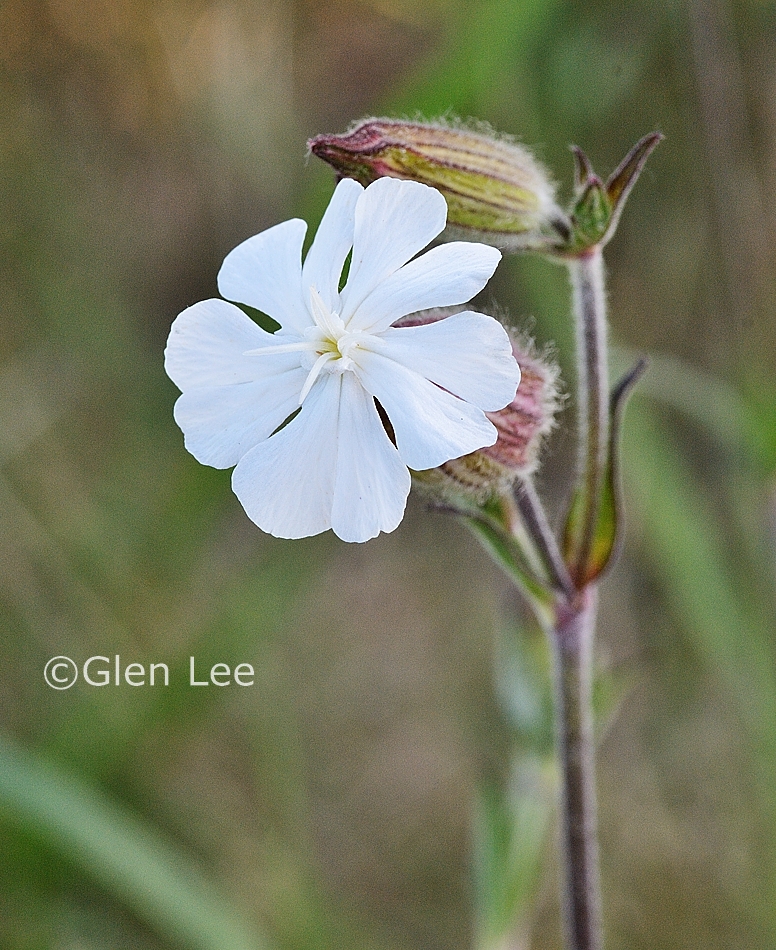
Female flower above, photo taken at 8:18 p.m.
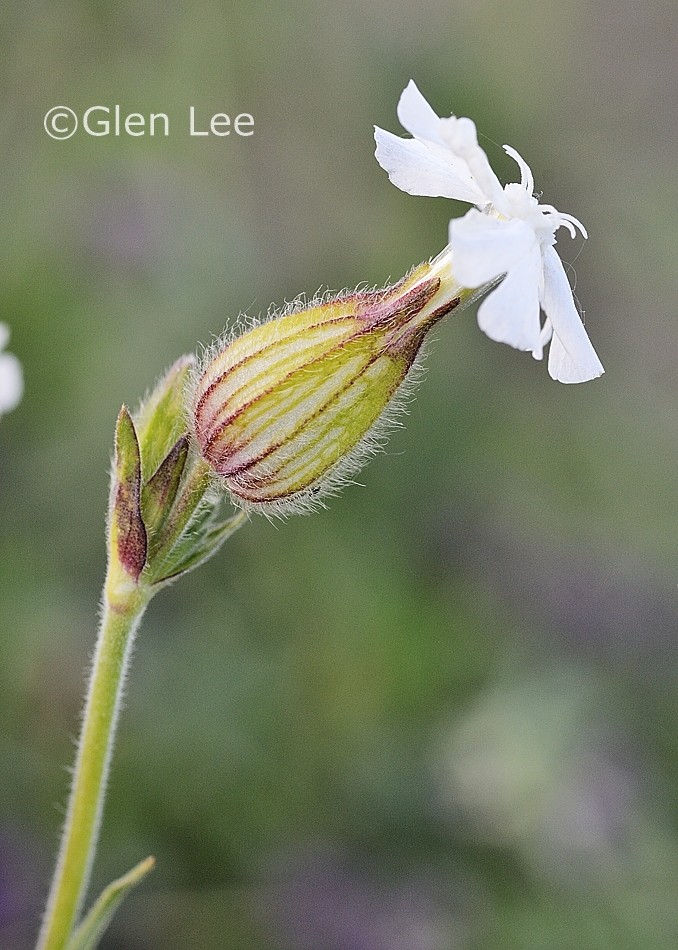
Plants dioecious, female flower above with styles exerted beyond the
petals.
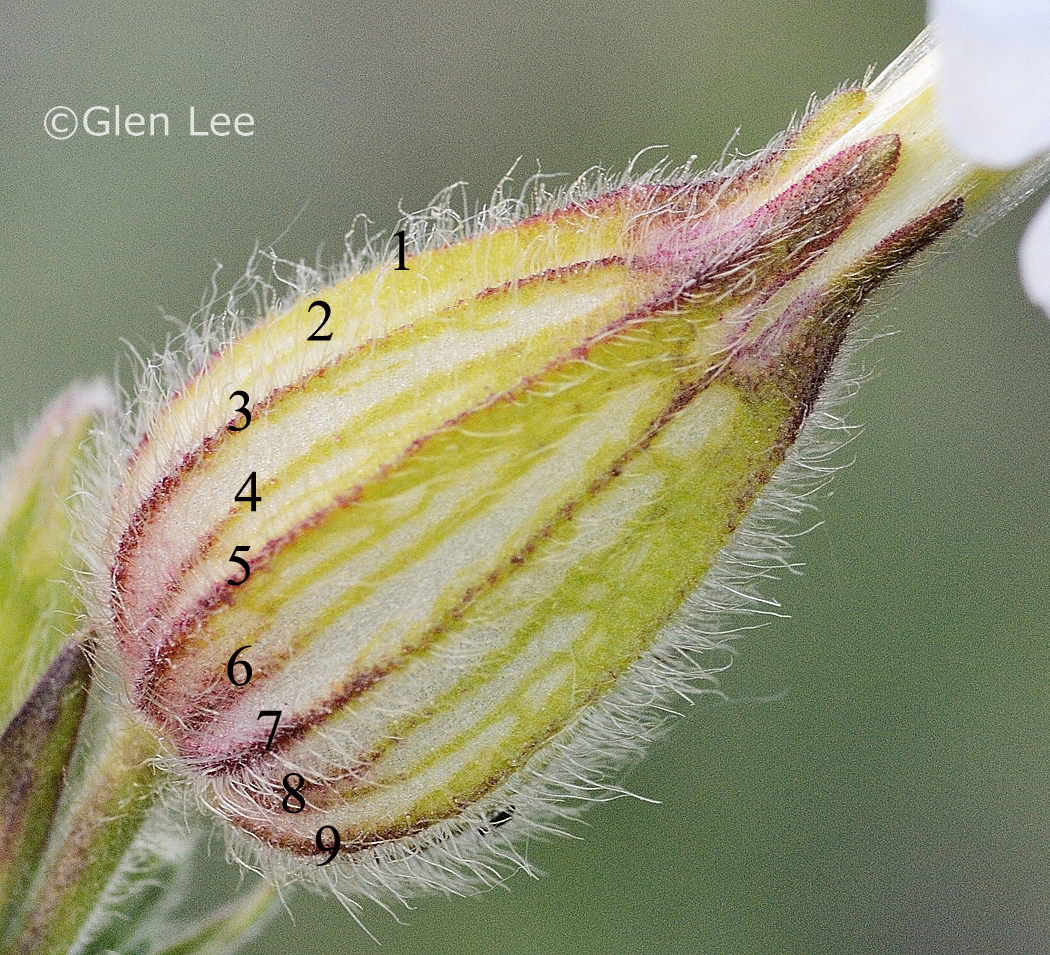
Female flower above, I count 9 veins (lines) viewing one side of the
calyx in above photo.
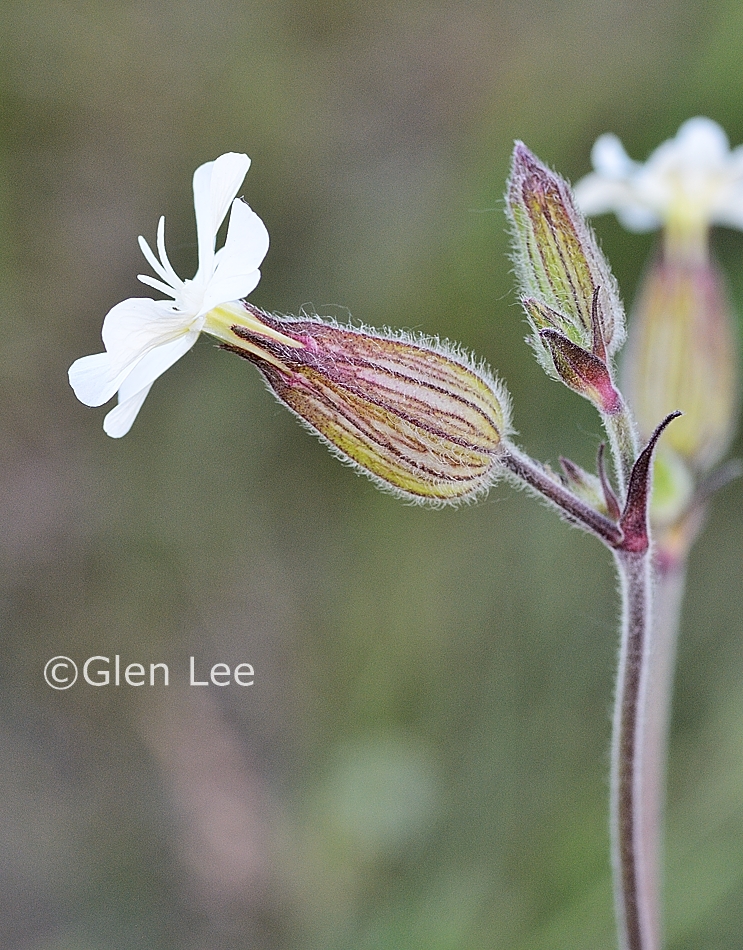
Plants dioecious, female flower above with styles exerted beyond the
petals.
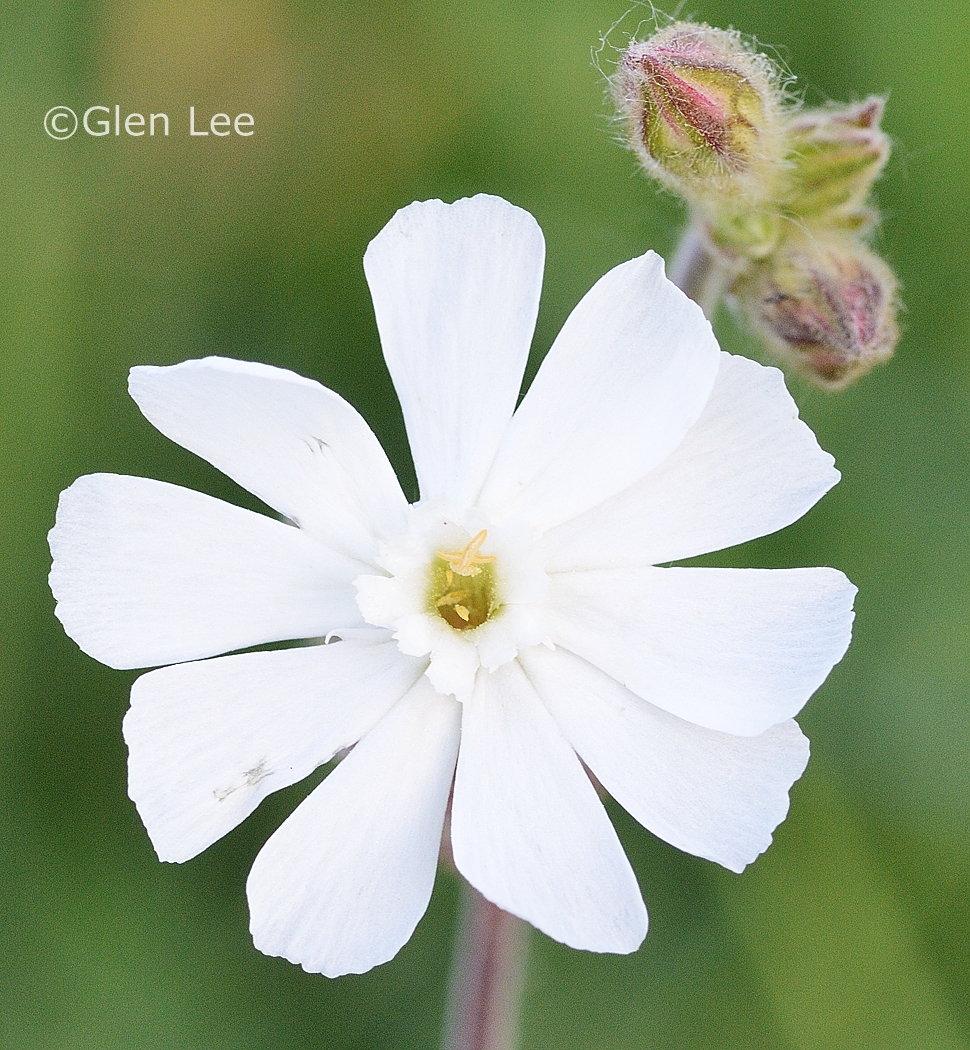
Male flower in above photo, anthers of the stamens peeking out of
the base of the petals.
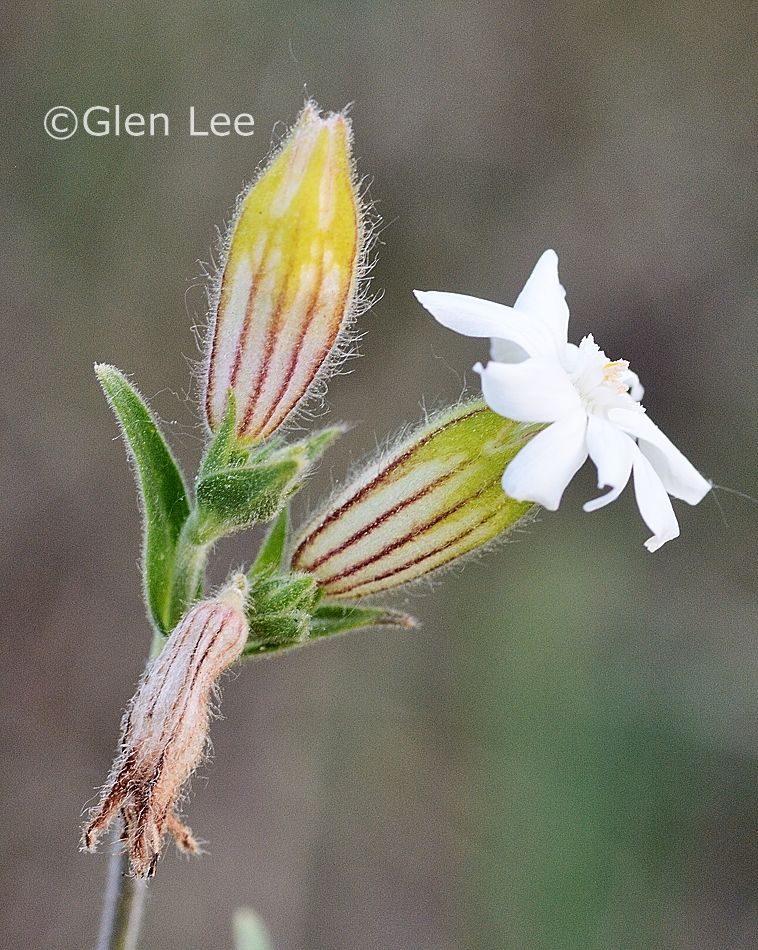
Male flowers above, I count 5 veins viewing one side of the calyx in
above photo.
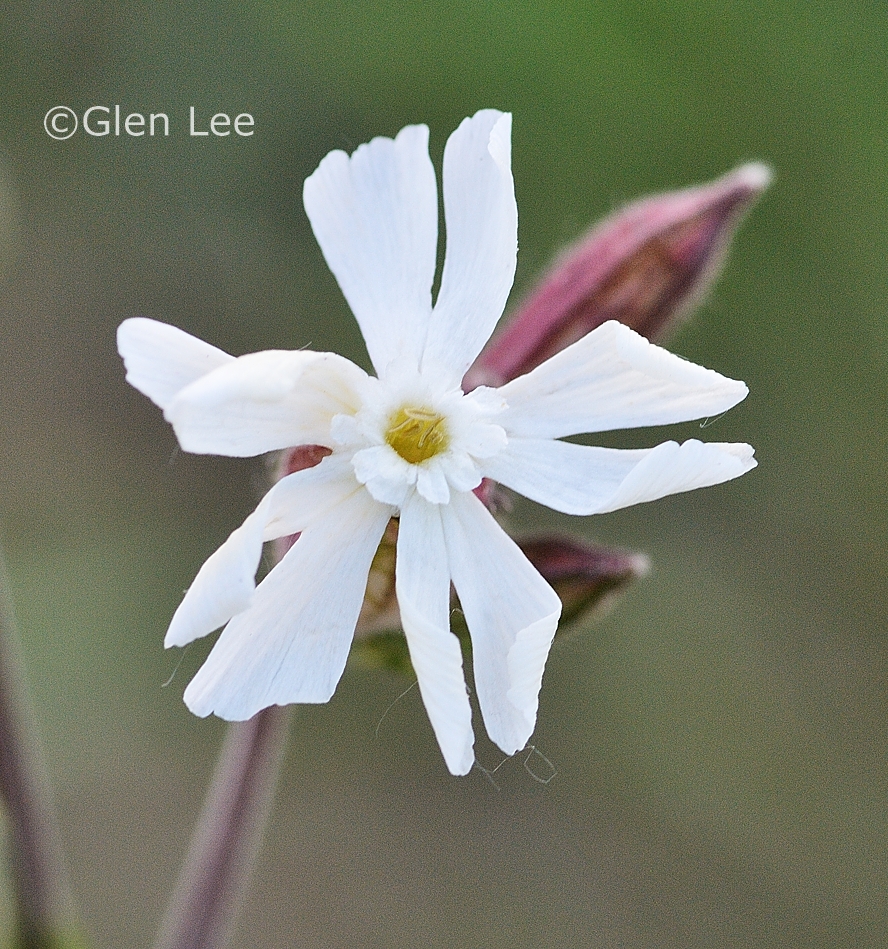
Male flower just opening, anthers of the stamens not exerted
beyond the base of the petals.
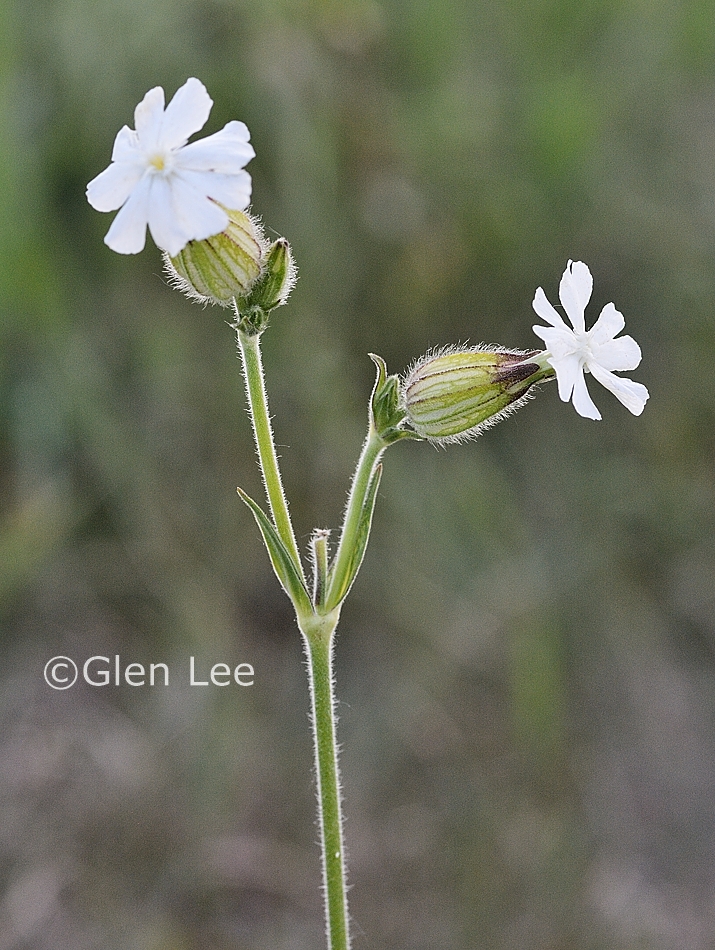
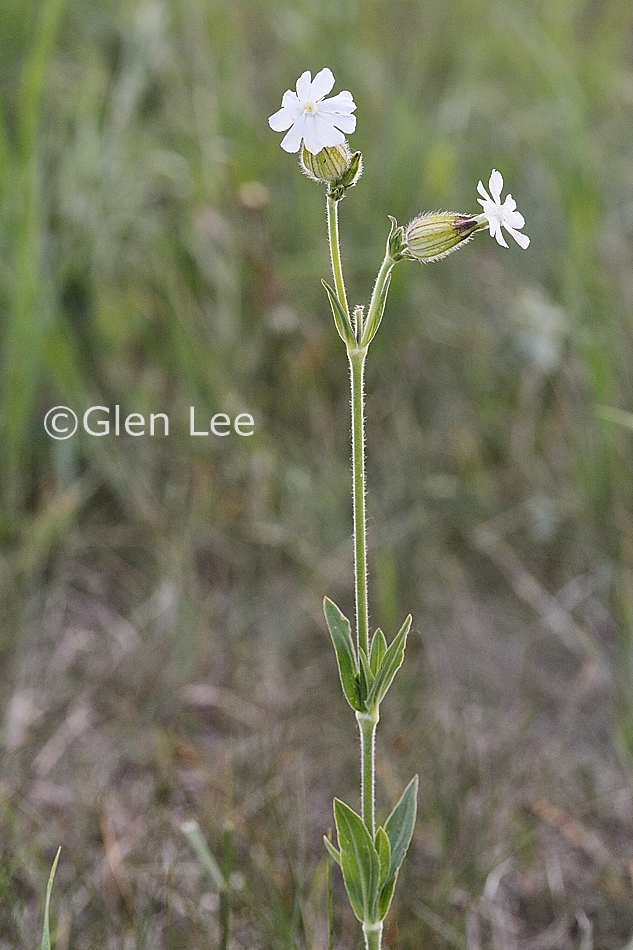
Above photo taken at 8:45 p.m.
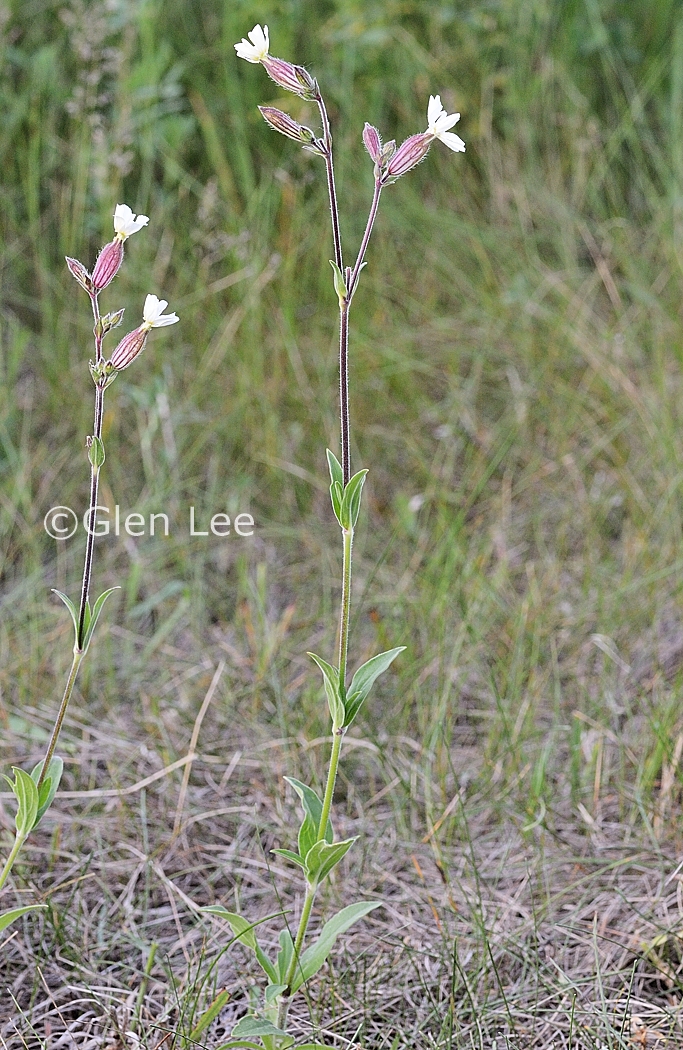
Above photo taken at 8:55 p.m.
Origin: Introduced.
General: Perennial with a taproot. Plants are rough pubescent, the stems somewhat sticky towards the top.
This plant is designated as a noxious weed in Saskatchewan.
Flowers: Plants are dioecious (male and female flowers on separate plants). Observing this characteristic is needed to identify this plant. The flowers are white and have 5 petals, the petals are cleft. The calyx is inflated, are elliptical to ovate shaped. The calyxes of the female flowers have 20 veins, male flowers 10 veins. The calyxes are reddish to greenish-red in colour.
We measured flowers from 2 to 3 cm diameter, petals at 11 mm long, and a calyx at 30 mm long by 15 mm wide.
The flowers begin to open at 8:00 p.m. Confusingly, the male flowers open 30 to 45 minutes after the female flowers. So for half an hour we only seemed to be finding female flowers… we asked ourselves what are we missing here? Finally we dissected some flowers and thought we found unopened male flowers with stamens on different plants from female flowers.
The styles of the female flowers are exerted beyond the flower
petals, while the stamens of the male flower are usually included (not
exerted beyond the petals), making the male flowers really difficult to
photograph.
Leaves: Leaves are opposite and entire, each pair of
leaves rotated at 90 degrees to the pair of leaves above and below them.
Leaves are oblong to elliptical in shape. The upper leaves sessile, the
lower leaves with petioles. We measured a lower leaf at 75 mm long by 25
mm wide, and an upper leaf at 45 mm long by 12 mm wide.
Height: Listed in Budd's Flora to 75 cm, we measured plants to 79 cm tall.
Habitat: Fields, roadsides, waste areas.
Abundance: Uncommon.
Synonym: This plant is listed in various field guides we own as Silene alba, Lychnis alba, and Silene pratensis.
Similar species: This plant can be confused with
Silene noctiflora (Night-Flowering Catchfly).
Both species:
- have +or- white flowers, the flowers with five petals, the petals
cleft, the flowers open in the evening, the flowers with swollen
calyxes.
- opposite leaves, each pair growing at 90 degrees to the pair above and
below them
- sticky foliage, particularly towards the end of stems (although S.
noctiflora is much stickier).
- flowers with strongly veined (striped) calyxes. The veins
reddish-brown in colour.
The differences:
- S. latifolia has male and female flowers on separate plants,
while S. noctiflora has perfect flowers each flower has stamens
and pistils.
- The calyxes of the female flowers of S. latifolia have 20
veins (male flowers 10 veins), while the calyxes of S. noctiflora
have 10 veins.
- S. latifolia is perennial with a taproot, S. noctiflora
is annual with fibrous roots.
When and where photographed: The above photos were taken June 24th in a grassy highway ditch about 350 km north of our home of Regina, SK.